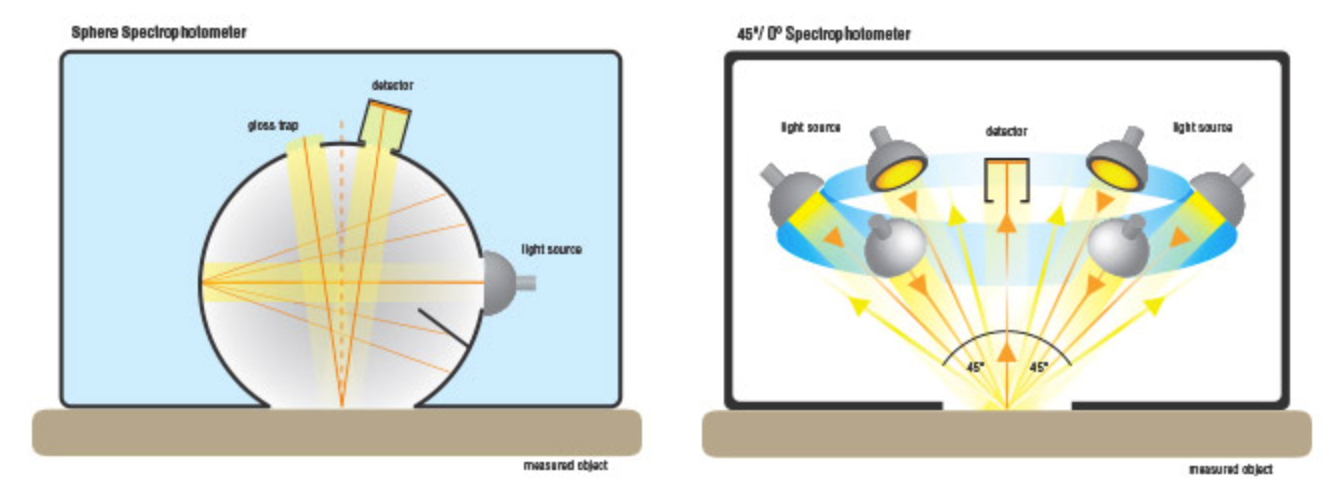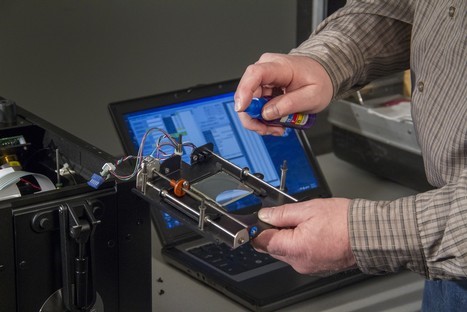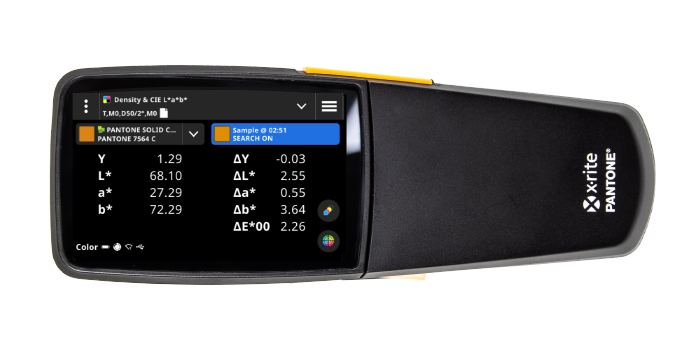In a perfect world, you should be able to put ink in the press, run a job, and achieve color consistency. Unfortunately, every year flexographic and gravure printing operations waste ink, substrate, and press time trying to get color right.
Although advancements in technology have made it easier to achieve color accuracy, the variables that affect color still exist. In this three part series we’ll share over two dozen reasons your color might be wrong at press side. Today’s topic looks at issues that can affect your color measurement instrument and substrates.
1 – Choosing the wrong instrument for the job
0°:45° spectrophotometers like our eXact 2 are very popular for print and packaging applications. But if you’re measuring reflective materials like poly or foil balloons or printing with metallic inks, you should be using a sphere geometry spectrophotometer like the Ci64.

Reflective surfaces pose a challenge because the effect of gloss can actually change the sample’s color appearance. A 0°/45° spectrophotometer excludes gloss to mimic the way a human observer views the sample. Therefore a measurement on foil with a 0°:45° can give a reading that does not match the way the eye will view it. Using a sphere instrument like a Ci64 can include or exclude gloss in different applications so it will match what the human eye will view. Check out our blog Effective Ways To Measure Reflective Surfaces to learn more.
2 – Using an out-of-calibration or malfunctioning spectro
A poorly calibrated instrument, especially one that has been dropped, can lead to bad color readings at press. If your instrument is not reading correctly and you’re not closely checking calibration, the ink techs could be toning colors that shouldn’t be just so the software says it’s correct.
This common issue is easy to fix with proper device maintenance. Calibrate regularly, at least before every operator change. If your instrument fails calibration or your measurements are really far off, it’s probably due for service. Our Caring for your Spectrophotometer blog explains our options for service and certification.
3 – Choosing the wrong illuminant settings
Make sure you read and evaluate your sample using the same illuminant and observer settings as your standard. Most printing facilities check colors under a D65/10° noon sunlight or a D50/2° horizon sunlight, but sometimes customers specify their unique tolerances ahead of time. Be sure you check this before you begin a job.
4 – Forgetting to switch the Delta E calculation
Delta E CMC had been the most popular choice since it was developed back in 1988, but Delta E 2000 has been gaining traction among some of the largest printer buyers. This updated tolerancing calculation is more forgiving when it comes to reading color samples. Check out our tolerancing blog to learn more.
Some workflows require you to switch between Delta E calculation for different customers. In the heat of a makeready, it’s easy to forget.
5 – Poor backing material
The backing material you place under your print sample is very important. Many samples are not completely opaque, allowing the instrument to pick up color data from the background and skewing your measurement results. Using a backer ensures the instrument is only reading the color data you want it to capture.
A stainless steel or wood table is not a good backing option. For consistent readings, always use the same black or white backer.
The best option is to purchase ISO-compliant backing materials. If you choose to pick your own backing materials, make sure they are all from the same batch and are consistent across the area of measurement. Remember, if they are not ISO-compliant, you need to use the same material from pre-press to press-side.
6 – Manually entering L*a*b* values
Here’s something we see a lot. A customer sends a printer L*a*b* values to match, but doesn’t include the complete set of reflectance data that was recorded when the color was measured. Even if the printer manually correctly enters the L*a*b* values as the color standard, the final color might not be correct.
It’s best to read your standard into the software with a color measurement device, then export it as a .mif or .cxf file. These files can easily be e-mailed to and from customers to ensure everyone is working from the same color standard that includes reflectance data.
7 – Using the wrong filter (M0, M1, M2, M3)
To get consistent readings on papers with optical brighteners and also achieve agreement in the viewing booth, most printing specifications now use M1. Many printers are using a different measurement mode. This can cause a mismatch in the workflow depending on the paper used and the supplied specification or aim. Regardless of whether your operation has or hasn't made the switch, it is very important to understand that some standards might have been entered using one or the other. Be aware of these M settings in coordination with your operation. When you do make the switch, you may need to re-enter a lot of your standards.
8 – Different operating procedures
If only one operator follows these steps, your color isn’t going to be consistent. You need to document everything and communicate it to everyone involved in the workflow. Standard operating procedures (SOPs) provide a roadmap, help with issues, and make it much easier to train new employees. When SOPs are properly developed and implemented, they also ensure everyone is operating the spectrophotometer the same way, regardless of shift or location.
Coming up next
Check out parts two and three of our “Why your Color Might be Wrong on Press” series, which covers issues with standards & ink and environmental factors.



